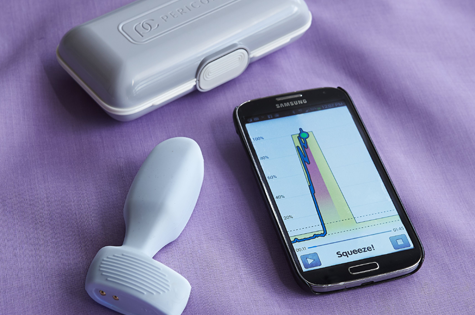NEW YEAR, NEW YOU, OUTSIDE AND IN!:Give your pelvic floor the workout it deserves for a fantastic 2016
Date: January 29 2016

When committing to New Years’ resolutions, the most common promises made to our future self are centred on health and fitness. For many, this refers to body shapes and toned thighs and tummies, forgetting that what is on the inside is just as important!
It’s a truth universally acknowledged – pelvic floors are never top of the list. The majority of Aussie women probably haven’t thought about their pelvic floor muscles recently, despite knowing that having a strong pelvic floor is important – before, during and after childbirth especially. In fact, a staggering 70 per cent of Australians with urinary leakage – the primary symptom of a weak pelvic floor - do not seek advice and treatment for their problem.
Make 2016 is the year of being proactive when it comes to strengthening your pelvic floor muscles, rather than just “padding the problem” - bladder leakage is not something you should put up with! Restoring your pelvic floor to perfect health in 2016 is one resolution that’s easy to keep - it takes minutes, requires minimal exertion and can have a positive impact on all areas of your life – emotional, physical and mental. As an added bonus, pelvic floor exercises – also known as Kegels - can be done anywhere and at any time – at home, in the office (nobody will know what you’re up to!), or even at the movies.
Childbirth, menopause and other events can injure the pelvic floor muscles, all of which help support the bladder. When these structures weaken, the bladder shifts downwards and as a result, leaking can occur during moments like coughing, laughing, jumping, lifting or running. By strengthening the pelvic floor, it can help reduce/eliminate leaking, improve sexual function, reduce chance of pelvic organ prolapse, strengthen the overall core and improve muscle control and confidence.
Women's Health physiotherapist, Annette Innes offers her TOP 5 TIPS for strengthen pelvic floor muscles:
1) Ensure you are doing a correct and optimal exercise technique. If you are unsure, see a Continence and Women’s Health Physiotherapist; locate the nearest to you via the link below https://www.physiotherapy.asn.au/APAWCM/Controls/FindAPhysio.aspx.
2) Try the ‘Stop the Flow” test. Stop the flow of urine midstream but NOT first thing in the morning when you have a full bladder and strong flow, only once per wee, and make sure you can start again to finish passing your urine. This is only a test, and should not be done more than once per week. It is not always an indication of your pelvic floor muscle strength, but provides awareness of the muscles for some people.
3) Set aside some time each day for pelvic floor exercises. You will need to focus to do a correct contraction at first, so traffic lights may not be safe! Some women do their exercises at a toilet stop after a wee – when wiping, while sitting, while standing, and walking to wash their hands. Those who persist are those who will succeed!
4) Don’t try too hard. It is important to localise your exercise to the muscles around your vagina and urethra. Your neck, eyebrows, chest and upper abdominals are not attached to the pelvic floor and will waste your valuable energy – keep breathing!
5) Try a home biofeedback device. This can be used for self-assessment and motivation; PeriCoach was developed in consultation with healthcare professionals: www.pericoach.com.
Award-winning Australian fitness presenter Marietta Mehanni says the biggest challenge for most women is reminding themselves to actually do pelvic floor exercises: “One method to help remind you to do your exercises is to set a daily timer – particularly at a time in the day that is the least bit interesting, such as waiting in a line, for an attachment to load up on the computer, or even whilst in a conversation that may not interest you. Performing pelvic floor exercises during these times will certainly make the time go faster!”
About PeriCoach*
The PeriCoach System® is the first training device, web portal and smartphone app to take the guesswork out of pelvic floor muscle training, invented right here in Australia. A discreet device that fits into a woman’s life – and her handbag - PeriCoach is an Australian innovation that harnesses the availability of personalised technology, so its user has access to real time visual feedback as she performs each exercise. It is a sensor device that detects pelvic floor muscle activity and measures the strength of each muscle contraction, linked to a smartphone app via a wireless Bluetooth connection. www.pericoach.com
|
||||||||














__small.png)










